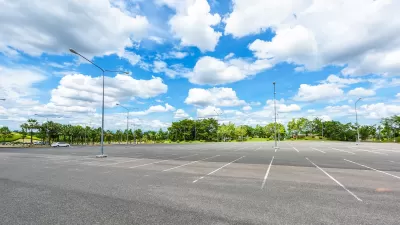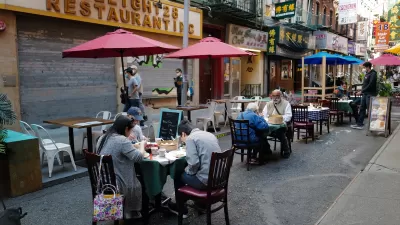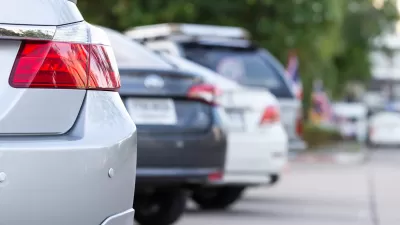Small-scale interventions can lead the way to major parking reforms.

Is your community ready for Parking Season?
For over a decade, urban activists around the world have celebrated Park(ing) Day on September 20, marking a day when urbanists demonstrate new uses for parking spots and take the opportunity to propose more effective parking policies.
As Carlee Alm-LaBar explains in a piece for Strong Towns, “One powerful way for cities to increase their resilience and productivity is to abolish parking minimums. For local heroes, embracing this challenge often involves taking small steps before reaching the final goal.” This year more than ever, the movement toward parking reform is growing in small and big cities alike.
Alm-LaBar uses an example from Lafayette, Louisiana to illustrate how temporary, low-cost installations can lead to permanent change. “The city worked with a nonprofit organization — ReCover Acadiana (now Civicside) — to host Park(ing) Day in 2017. That first year, it had 16 temporary installations in Downtown Lafayette. They were works of architecture, museum-inspired installations, a temporary fountain and a simple installation that foreshadowed enjoying a dining experience outdoors.” Less than a year later, the city began permitting parklets and outdoor dining spaces in former parking spots.
FULL STORY: How To Use Parking Season To Make Your Community Stronger

Planetizen Federal Action Tracker
A weekly monitor of how Trump’s orders and actions are impacting planners and planning in America.

Maui's Vacation Rental Debate Turns Ugly
Verbal attacks, misinformation campaigns and fistfights plague a high-stakes debate to convert thousands of vacation rentals into long-term housing.

San Francisco Suspends Traffic Calming Amidst Record Deaths
Citing “a challenging fiscal landscape,” the city will cease the program on the heels of 42 traffic deaths, including 24 pedestrians.

Amtrak Rolls Out New Orleans to Alabama “Mardi Gras” Train
The new service will operate morning and evening departures between Mobile and New Orleans.

The Subversive Car-Free Guide to Trump's Great American Road Trip
Car-free ways to access Chicagoland’s best tourist attractions.

San Antonio and Austin are Fusing Into one Massive Megaregion
The region spanning the two central Texas cities is growing fast, posing challenges for local infrastructure and water supplies.
Urban Design for Planners 1: Software Tools
This six-course series explores essential urban design concepts using open source software and equips planners with the tools they need to participate fully in the urban design process.
Planning for Universal Design
Learn the tools for implementing Universal Design in planning regulations.
Heyer Gruel & Associates PA
JM Goldson LLC
Custer County Colorado
City of Camden Redevelopment Agency
City of Astoria
Transportation Research & Education Center (TREC) at Portland State University
Jefferson Parish Government
Camden Redevelopment Agency
City of Claremont





























